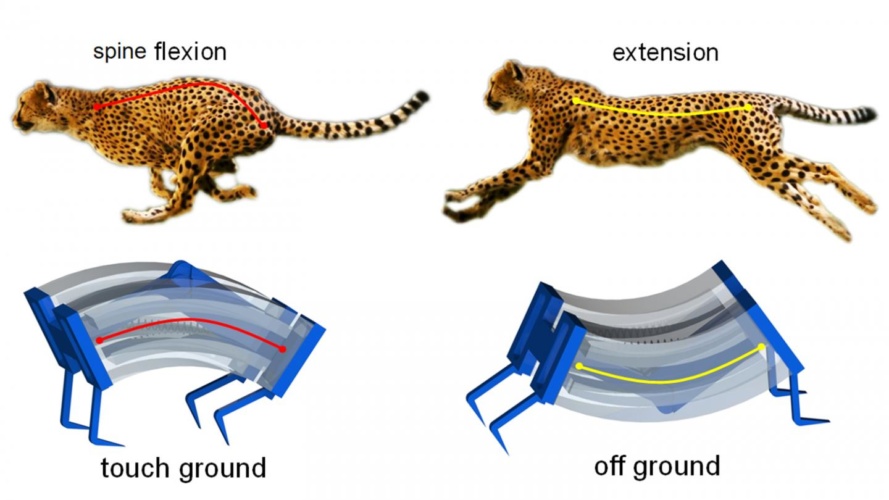The new soft robotics are fast in water and also capable of grabbing objects delicately, or with enough strength to lift heavy objects.
Self-propelling DEAnsect soft robots gear up to swarm
"Cheetahs are the fastest creatures on land, and they derive their speed and power from the flexing of their spines," said Jie Yin, an assistant professor of mechanical and aerospace engineering at North Carolina State University and corresponding author of a paper on the new soft robots published in Science Advances.
"We were inspired by the cheetah to create a type of soft robot that has a spring-powered, 'bistable' spine, meaning that the robot has two stable states," Yin said in a statement. "We can switch between these stable states rapidly by pumping air into channels that line the soft, silicone robot. Switching between the two states releases a significant amount of energy, allowing the robot to quickly exert force against the ground. This enables the robot to gallop across the surface, meaning that its feet leave the ground.
"Previous soft robots were crawlers, remaining in contact with the ground at all times. This limits their speed."
The fastest soft robots until now could move at speeds of up to 0.8 body lengths per second on flat, solid surfaces. The new class of soft robots, dubbed Leveraging Elastic instabilities for Amplified Performance (LEAP), reach speeds of up to 2.7 body lengths per second at a low actuation frequency of about 3Hz. These new robots, which are approximately 7cm long and weigh about 45g, can run up steep inclines also.

The researchers also demonstrated that the LEAP design could improve swimming speeds for soft robots. Attaching a fin, rather than feet, a LEAP robot was able to swim at a speed of 0.78 body lengths per second, compared to 0.7 body lengths per second for the previous fastest swimming soft robot.
"We also demonstrated the use of several soft robots working together, like pincers, to grab objects," Yin said. "By tuning the force exerted by the robots, we were able to lift objects as delicate as an egg, as well as objects weighing 10kg or more."
The researchers note that this work serves as a proof of concept and are optimistic that they can modify the design to make LEAP robots that are even faster and more powerful.
"Potential applications include search and rescue technologies, where speed is essential, and industrial manufacturing robotics," Yin said. "For example, imagine production line robotics that are faster, but still capable of handling fragile objects.”




Poll: Should the UK’s railways be renationalised?
I think that a network inclusive of the vehicles on it would make sense. However it remains to be seen if there is any plan for it to be for the...